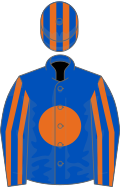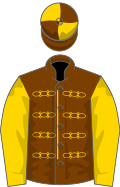| Class | Group 1 |
|---|---|
| Location | Ascot Racecourse Ascot, England |
| Inaugurated | 1862 |
| Race type | Flat / Thoroughbred |
| Website | Ascot |
| Race information | |
| Distance | 1m 1f 212yd (2,004 metres) |
| Surface | Turf |
| Track | Right-handed |
| Qualification | Four-years-old and up |
| Weight | 9 st 2 lb Allowances 3 lb for fillies and mares 2 lb for S. Hemisphere 4yo |
| Purse | £1,057,000 (2025) 1st: £599,708 |
| 2025 | ||
 |  |  |
| Ombudsman | Anmaat | See The Fire |
| Previous years | ||
|---|---|---|
| 2024 | ||
 |  |  |
| Auguste Rodin | Zarakem | Horizon Dore |
| 2023 | ||
 |  |  |
| Mostahdaf | Luxembourg | Adayar |
| 2022 | ||
 |  |  |
| State Of Rest | Bay Bridge | Grand Glory |
| 2021 | ||
 |  |  |
| Love | Audarya | Armory |
| 1990-1988 | ||
|---|---|---|
| 1990 | ||
 |  |  |
| Batshoof | Relief Pitcher | Terimon |
| 1989 | ||
 |  |  |
| Two Timing | Beau Sher | Most Welcome |
| 1988 | ||
 |  |  |
| Mtoto | Broken Hearted | Highland Chieftain |
The Prince of Wales's Stakes is a Group 1 flat horse race in Great Britain open to horses aged four years or older. It is run at Ascot over a distance of 1 mile 1 furlong and 212 yards (2,004 metres), and it is scheduled to take place each year in June.







































